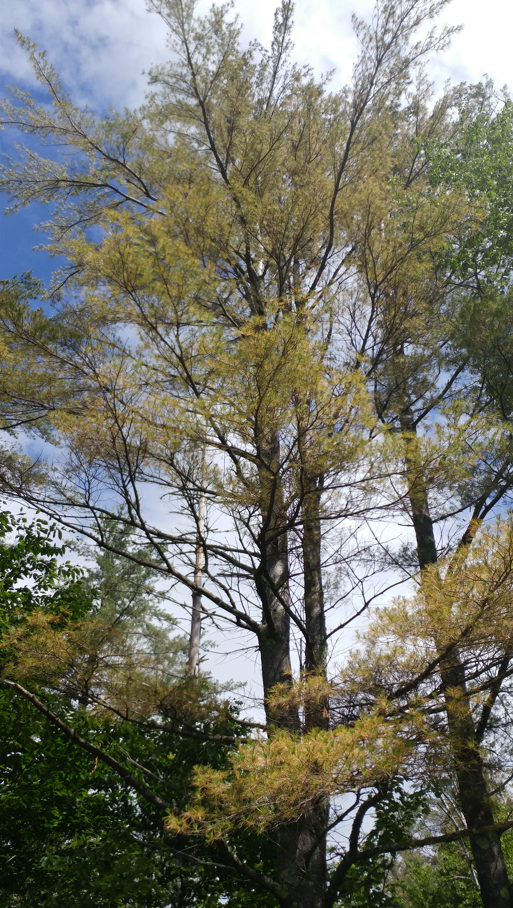
PRESS RELEASE
For Immediate Release – June 11, 2024
Contact:
Josh Halman, Forest Health Program Manager
Department of Forests, Parks, and Recreation
joshua.halman@vermont.gov, 802-279-9999
Widespread Symptoms of White Pine Needle Damage Reported Statewide
Montpelier, VT – The Department of Forests, Parks, and Recreation (FPR) has observed significant symptoms of white pine needle damage (WPND) affecting eastern white pine (Pinus strobus) trees across Vermont. WPND is caused by a complex of four fungal species, that infects newly emerged needles. Although the infected needles remain asymptomatic in the first year, the following spring, they turn yellow, then brown, and eventually fall off prematurely.
“WPND is linked to the humidity and moisture levels from the previous spring,” said Savannah Ferreira, FPR Forest Health Specialist. “Given the wet conditions we experienced in 2023, we are seeing an increase in needle damage this year.”
While WPND rarely kills trees outright, it can reduce their growth and overall health. Residents are advised not to panic if they observe these symptoms in their backyard trees. Vermont’s white pines are resilient, and otherwise healthy trees are expected to recover from this damage. There is no need for removal of affected trees.
It's important to note that the browning of pines along roadsides treated with salt may resemble WPND symptoms. However, salt spray damage typically appears in late winter and early spring, whereas WPND symptoms manifest in the late spring / early summer.
White pine needle damage has been observed in Vermont for over a decade, with severity varying based on weather conditions. Heavy infections can cause significant defoliation and limited dieback of unhealthy trees. In 2023, WPND accounted for 3,349 acres of observable damage on white pine trees throughout the state, a slight increase compared to 2022 and one of the highest levels in recent years.
For more information, please refer to our 2023 Forest Health Highlights.
###
